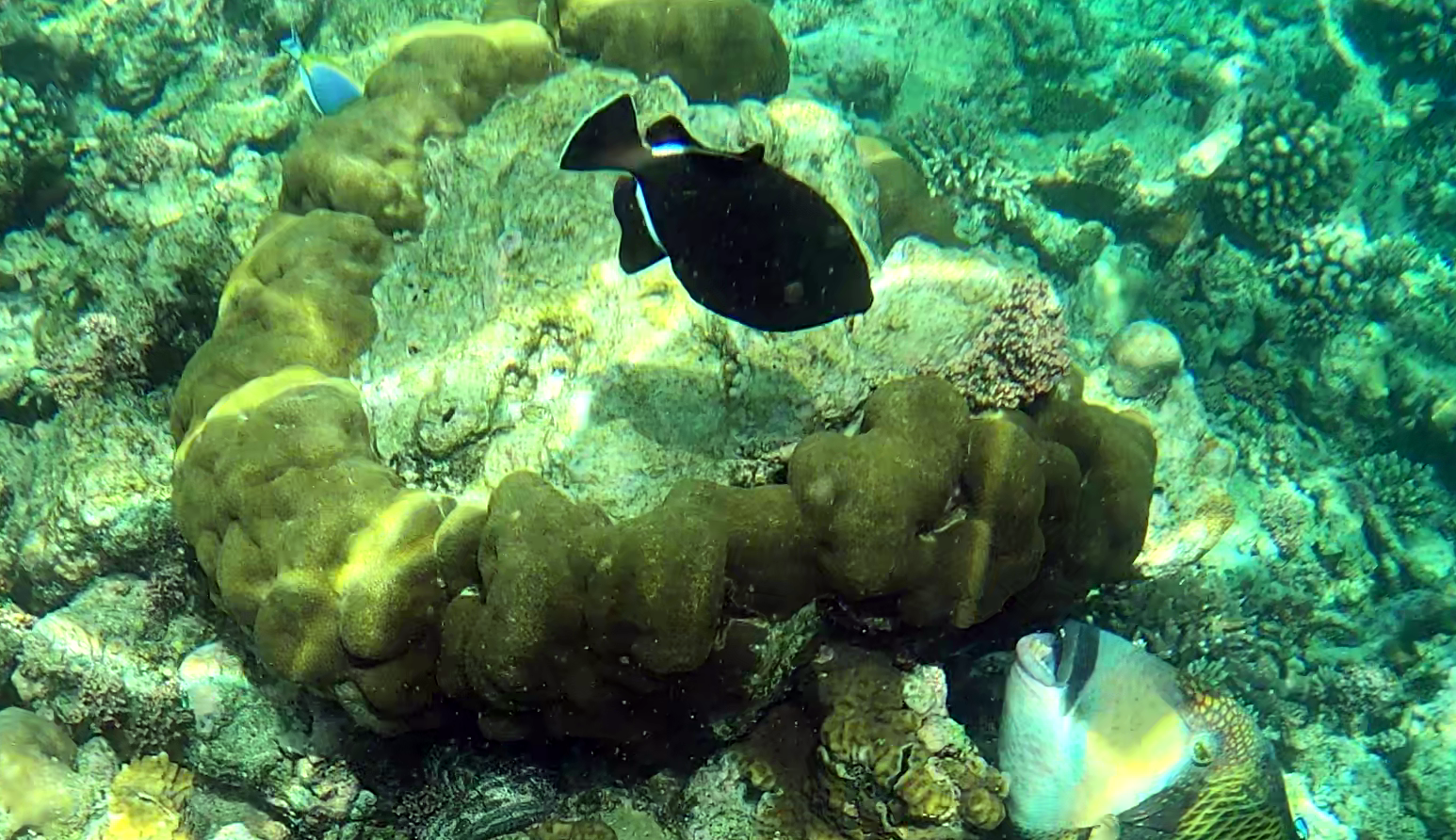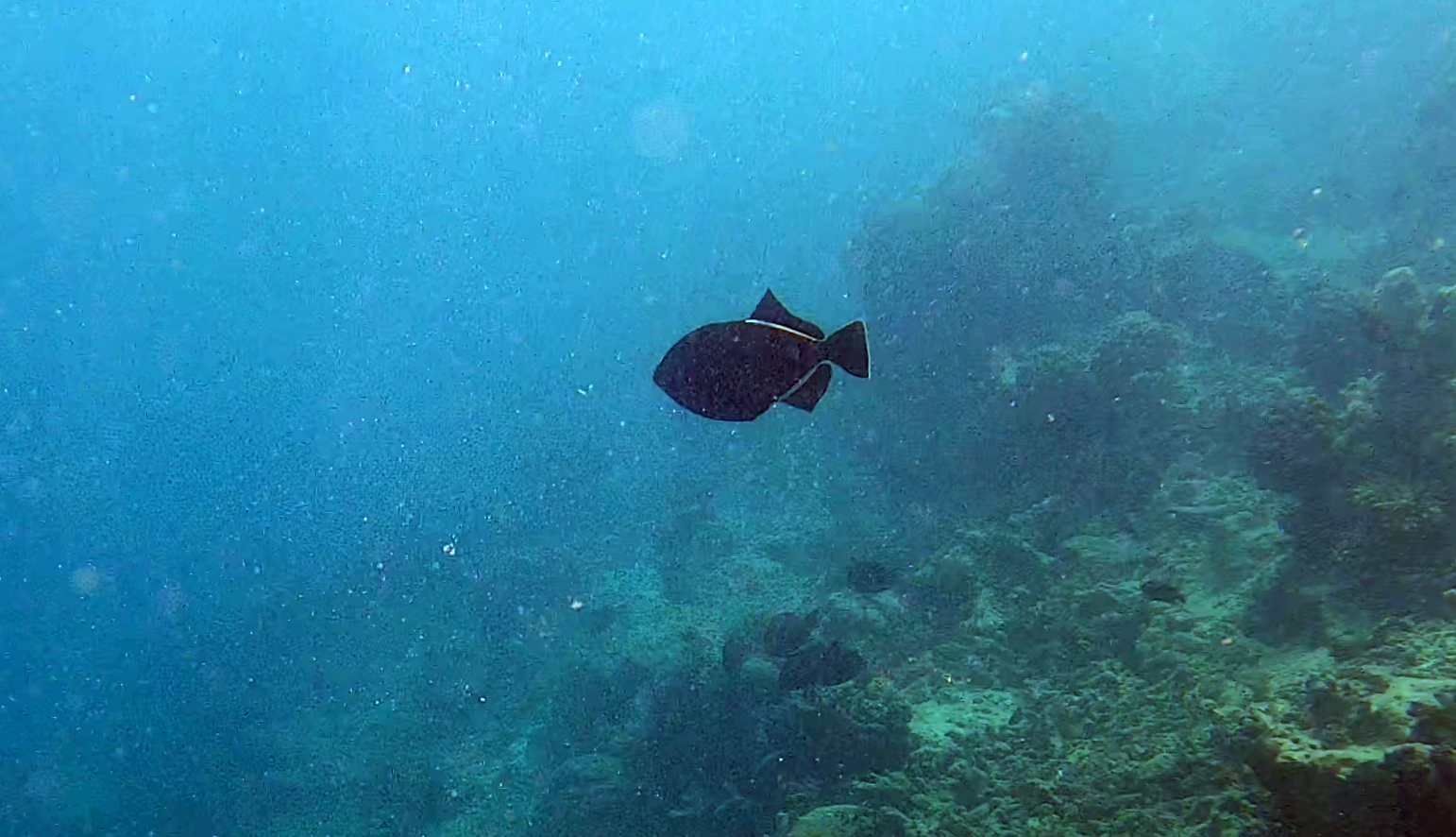Indian Triggerfish - Melichthys indicus
The Indian Triggerfish (Melichthys indicus), also known as the black-finned Triggerfish, has a brown body and black fins with white lines at the base of the dossal and anal fins. It is found across the Indian Ocean. They can grow up to 25 cm. long. The Indian triggerfish usually feeds on hard-shelled mollusks and echinoderms, but some feed on algae and zooplankton.
They are often very aggressive over their eggs, but are otherwise harmless. Indian triggerfish are very easy to keep at home, Some are peaceful but some are very aggressive towards other fish. pesce balestra indiano

These are not to be confused with the Hawaiian black Triggerfish or black Durgon (Melichtys niger) which is often mistaken as being Indian triggerfish within the trade. The Indian triggerfish has never been found near Hawaii, but the two species bear a striking resemblance between each other because of the similar shape and coloration.
Coral reefs deliver ecosystem services for tourism, fisheries and shoreline protection. Coral reefs are fragile, partly because they are sensitive to water conditions. They are under threat from excess nutrients (nitrogen and phosphorus), rising temperatures, oceanic acidification, overfishing (e.g., from blast, fishing, cyanide fishing, spearfishing on), sunscreen use, and harmful land-use practices, including runoff and seeps (e.g., from injection wells and cesspools).

Over 4,000 species of fish inhabit coral reefs. The reasons for this diversity remain unclear. Hypotheses include the “lottery”, in which the first (lucky winner) recruit to a territory is typically able to defend it against latecomers, “competition”, in which adults compete for territory, and less-competitive species must be able to survive in poorer habitat, and “predation”, in which population size is a function of postsettlement piscivore mortality. Healthy reefs can produce up to 35 tons of fish per square kilometer each year, but damaged reefs produce much less.
(extract from Wikipedia)
Gallery
Video Gallery
